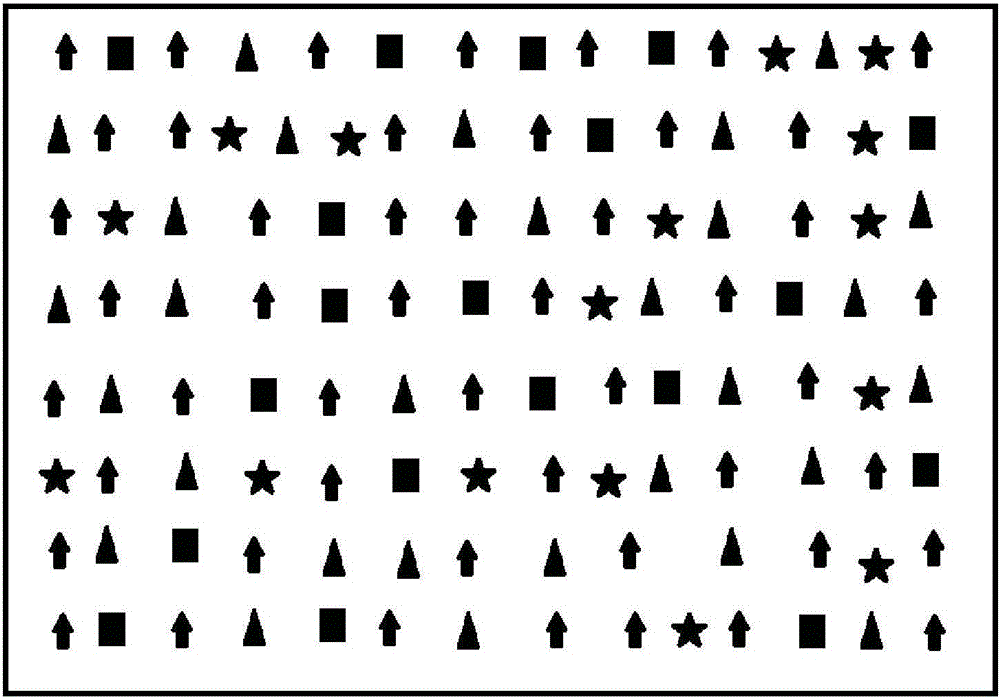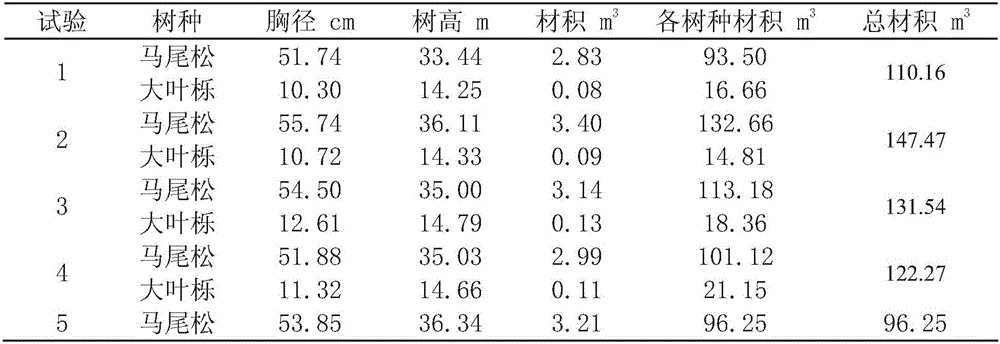Uneven-aged mixed plantation method of pine trees and broad-leaved trees
A technology of broad-leaved trees and pine trees, which is applied in the field of mixed crossing of pine trees and broad-leaved trees of different ages, and can solve the problems of poor mixed effect, high afforestation cost, and slow growth of Masson pine
- Summary
- Abstract
- Description
- Claims
- Application Information
AI Technical Summary
Problems solved by technology
Method used
Image
Examples
Embodiment 1
[0040] Implementation site: Zhenlong Forest Farm
[0041] Situation before the mixed-breeding: Zhenlong Forest Farm’s three-in-one field covers an area of 230 mu. The masson pine young forest (materials from Guangxi Forestry Academy’s excellent family seedlings of masson pine) built in July 2012 has a preservation rate of 56-85%, and the average tree height is About 1.75m.
[0042] In the rainy season in March 2015, red cones and lattice trees (one-year-old seedlings cultivated by Guangxi Academy of Forestry) were mixed in the pure forest of Pinus massoniana. Randomly plant different proportions according to the existing masson pine preservation conditions (number of dead masson pine plants): about 35% of red cones and 15% of lattice trees.
[0043] In July 2015, the statistical data and on-site observation of the mixed forest showed that the effect of the mixed forest had begun to show, and the growth of masson pine and red cone had increased. The overall appearance has b...
Embodiment 2
[0045] Implementation location: Oudong Forest Farm
[0046] The masson pine forest before mixed, planted in 1964, the current storage density is 15 trees / mu, the average diameter of the masson pine is more than 35cm, the average tree height is more than 25m, the forest is neat, the canopy density is high, but the canopy is sparse.
[0047] In March 2005, a 13-month-old Quercus japonica was used for a mixed experiment in Miaoling. The planting density of Quercus japonica was divided into 200, 150, 100, and 50 plants / mu (respectively, the test numbers were 1, 2, 3, and 4). Taking the pure forest of Pinus massoniana without mixed hybridization as the control (experiment number 5), 4 replicates were set for each density, and the area of each sample plot was 660m 2 , there is no protective line between the plots.
[0048]According to the analysis of the survey data in March 2015, after 10 years of mixed afforestation, except for the masson pine volume in experiment 1 which was l...
Embodiment 3
[0052] Implementation location: Forest shift 10-35 of Huashan Forest Farm
[0053] The pure forest of slash pine was planted in 2005, and the stand density was 70-90 trees / mu, and mixed in April 2016.
[0054] Choose sweetgum, oak oak, red cone, Milaopai, lotus tree, nannan, and birch as mixed tree species, and choose 1-3 different mixed tree species for different stands, as follows:
[0055] In stand 1, 70 pine trees / mu were preserved, and the total number of trees after mixed crossing was 110 / mu, and the number of mixed sweetgum, oak, and red cone was 20, 10, and 10, respectively.
[0056] In stand 2, 80 pine trees / mu are preserved, and the total number of pine trees is 120 / mu after mixed, 20, 10, and 10 trees of mixed lotus, nannan, and birch, respectively.
[0057] In stand 3, 75 pine trees / mu were preserved, and the total number of pine trees after mixed crossing was 115 trees / mu. The number of mixed red cones, Milaopai and sweetgum were 20, 10 and 10 respectively.
[0...
PUM
 Login to View More
Login to View More Abstract
Description
Claims
Application Information
 Login to View More
Login to View More - R&D
- Intellectual Property
- Life Sciences
- Materials
- Tech Scout
- Unparalleled Data Quality
- Higher Quality Content
- 60% Fewer Hallucinations
Browse by: Latest US Patents, China's latest patents, Technical Efficacy Thesaurus, Application Domain, Technology Topic, Popular Technical Reports.
© 2025 PatSnap. All rights reserved.Legal|Privacy policy|Modern Slavery Act Transparency Statement|Sitemap|About US| Contact US: help@patsnap.com


